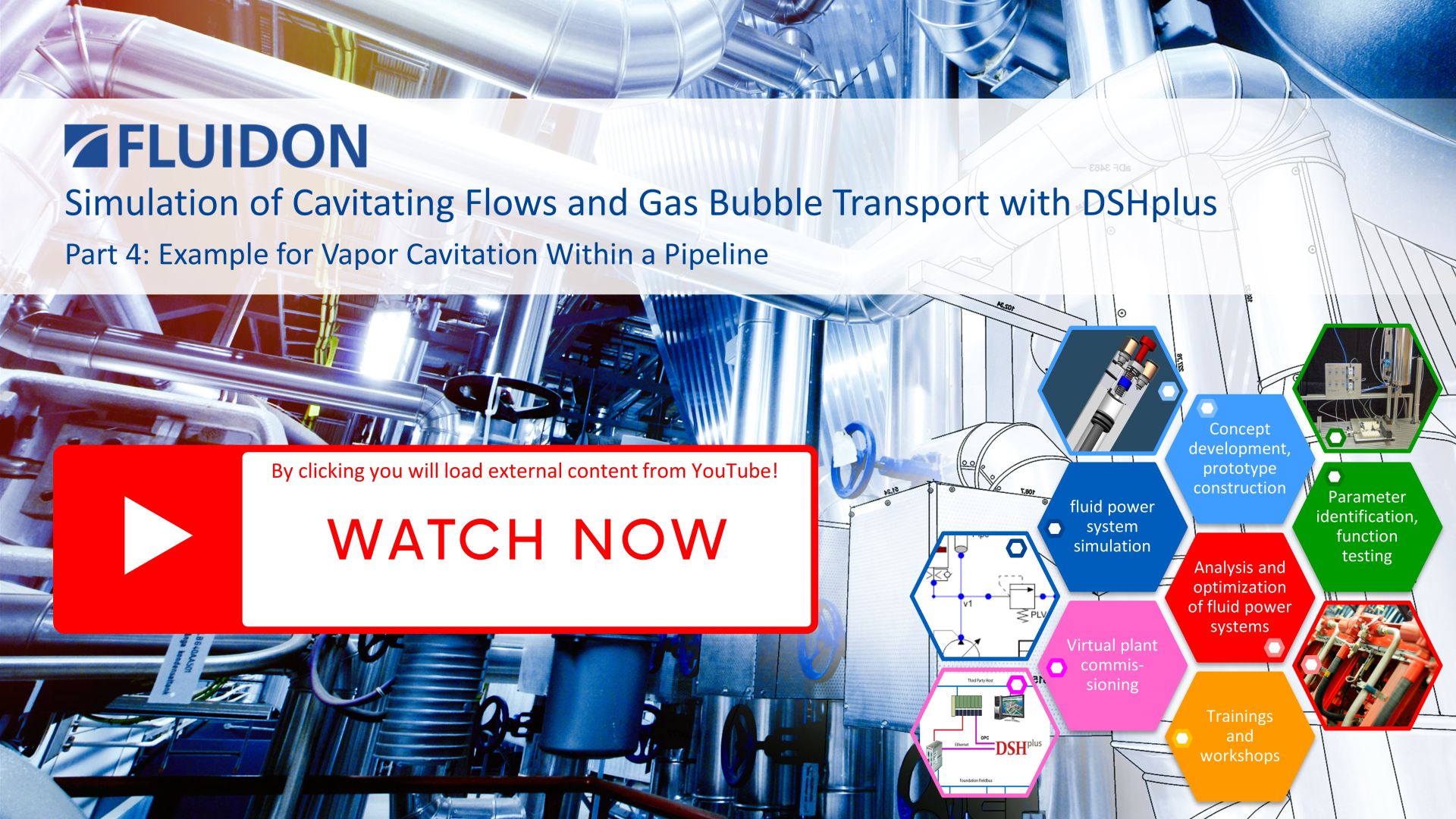Example: Vapour Cavitation Within a Pipeline
Vapor cavitation, particularly in conjunction with column separation, poses significant hazards to piping systems. These phenomena can lead to detrimental effects such as cavitation erosion and structural damage. One-dimensional Computational Fluid Dynamics (1D-CFD) simulations offer a valuable means of identifying these risks and optimizing the system.
Vapor cavitation arises when fluid pressure drops below the vapor pressure, resulting in the formation of vapor bubbles. These bubbles subsequently collapse vigorously upon re-entering higher-pressure regions, causing cavitation erosion. This erosive process gradually weakens the internal surfaces of pipes, valves, and other system components.
Column separation refers to the creation of a partial vacuum or low-pressure region within a liquid column, typically due to factors like high velocity or abrupt changes in flow direction. The collapse of the liquid column during column separation generates severe pressure fluctuations, potentially leading to system damage.
The utilization of 1D-CFD simulations offers several advantages in addressing these dangers:
-
Visualization: By employing 1D-CFD simulations, the flow behavior, pressure distribution, and locations susceptible to cavitation and column separation can be visualized. This visual representation facilitates the identification of problematic areas and design deficiencies.
-
Prediction of cavitation and column separation: Through the modeling of fluid flow and pressure distribution, 1D-CFD simulations can forecast the likelihood of vapor cavitation and column separation occurrences. This predictive capability enables proactive measures to be taken to mitigate potential hazards before they cause harm.
-
System optimization: 1D-CFD simulations allow for iterative testing and optimization of various design parameters. For instance, modifications to pipe diameters, valve configurations, or flow rates can be evaluated in terms of their impact on cavitation and column separation. This iterative process aids in identifying the most effective design adjustments for minimizing or eliminating these hazards.
-
Performance evaluation: By analyzing pressure drop, flow velocities, and potential cavitation risks, 1D-CFD simulations provide insights into the performance of the piping system under different operating conditions. This evaluation ensures that the system operates within safe parameters, minimizing wear and damage.
-
Material selection: 1D CFD simulations aid in assessing the potential effects of cavitation erosion on different materials. Considerations such as material strength, erosion resistance, and susceptibility to corrosion can be evaluated to guide appropriate material selection that can withstand the damaging consequences of cavitation.
In conclusion, 1D CFD simulations offer a powerful suite of tools for identifying, analyzing, and optimizing piping systems to mitigate the hazards associated with vapor cavitation and column separation. Leveraging these simulations allows for informed decision-making regarding system design, operating conditions, and material choices, thereby ensuring the long-term integrity and reliability of the piping infrastructure.
The performance of the mathematical models is demonstrated with an example simulation with DSHplus. The adjacent video shows the content of this page as a webinar.




